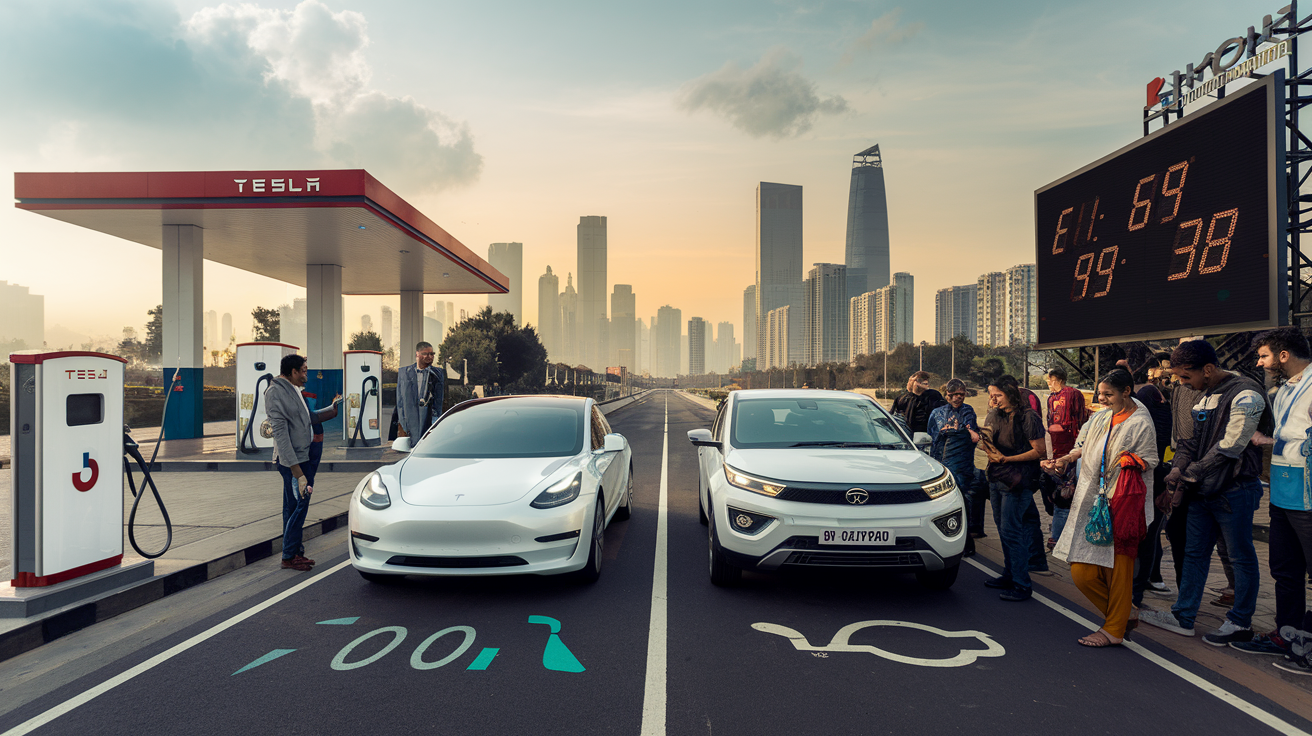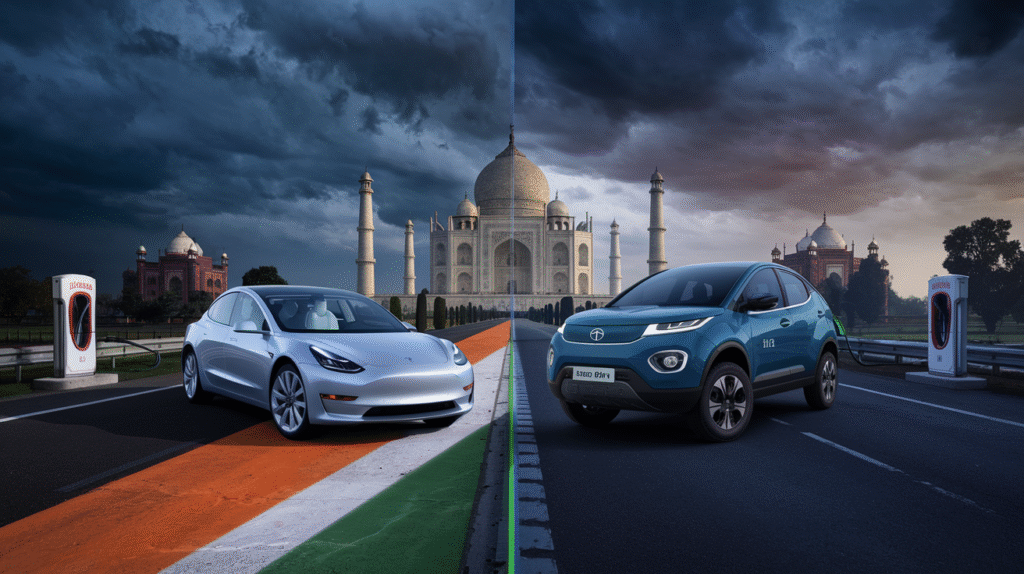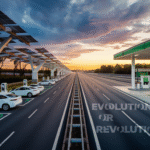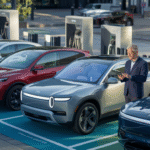Picture this: an electric car showdown where the world’s most famous EV brand faces off against a homegrown giant with 150+ years of industrial clout. That’s exactly what’s unfolding in India right now.
Tesla and Tata Motors are locked in a high-stakes battle for India’s EV market supremacy, with billions in potential revenue hanging in the balance. One brings global tech swagger, the other brings unmatched local manufacturing expertise.
What most analysts miss is how this rivalry perfectly captures India’s economic evolution – caught between embracing global innovation and supporting self-reliance.
So which company has the inside track? The answer isn’t as straightforward as you might think. It depends on three critical factors that most industry observers completely overlook.
India’s EV Market Landscape
A. Current market size and growth projections
India’s EV market isn’t just growing – it’s exploding. From a mere 0.3% market share in 2019, electric vehicles now represent nearly 2% of total vehicle sales. And guess what? Industry experts predict this figure will jump to 30% by 2030.
The numbers tell an impressive story:
- Current EV market value: Approximately $2 billion
- Projected market value by 2030: $80 billion
- Annual growth rate: 43.13% (2022-2030)
Tata Motors currently dominates with over 85% of the electric car market in India. Their advantage? A lineup of affordable electric cars that actually make sense for Indian consumers.
B. Government policies driving EV adoption
The Indian government isn’t just sitting back watching the EV revolution – they’re actively fueling it.
FAME II (Faster Adoption and Manufacturing of Electric Vehicles) scheme pumped ₹10,000 crore into subsidizing EV purchases. The Production Linked Incentive (PLI) scheme adds another ₹26,000 crore to boost domestic manufacturing.
State-level policies are game-changers too. Delhi offers waivers on road tax and registration fees, while Maharashtra provides purchase incentives up to ₹2.5 lakh.
Tax breaks? Got those too – GST on EVs sits at just 5% compared to 28% for traditional vehicles.
C. Consumer preferences and pain points
Indian EV buyers aren’t like their Western counterparts. Price sensitivity reigns supreme here.
Top consumer concerns:
- Initial purchase cost (65% of potential buyers cite this)
- Range anxiety (58%)
- Charging infrastructure (52%)
- Vehicle options (47%)
The sweet spot? EVs priced between ₹10-15 lakh with 300+ km range.
D. Infrastructure challenges and opportunities
The charging network remains India’s EV Achilles’ heel.
Current situation:
- Public charging stations: ~3,000 (compared to 100,000+ in China)
- EV-to-charging point ratio: 9:1 (ideal ratio is 4:1)
The opportunity? Massive. Battery swapping technology is gaining traction as a uniquely Indian solution to charging woes. Companies developing hybrid charging models combining home, workplace, and public infrastructure will likely capture massive market share.
The gold rush is on for companies racing to build charging networks along highways and in urban centers.
Tesla’s India Strategy
A. Entry plans and regulatory hurdles
Tesla’s road to India has been bumpy, to say the least. Elon Musk has been eyeing the Indian EV market since 2016, but regulatory speedbumps keep getting in the way. The main sticking point? Import duties reaching up to 100% on completely built units. Tesla wants tax breaks before committing to local manufacturing, while the Indian government wants Tesla to invest first.
The standoff continues, though recent signals suggest a potential breakthrough. Government officials have hinted at a possible custom duty reduction for EVs if Tesla commits to establishing a manufacturing facility within 2-3 years of market entry.
B. Proposed product lineup for Indian consumers
Tesla isn’t planning to launch their entire range in India initially. The Model 3 and Model Y are the likely candidates to spearhead Tesla’s India campaign. These more affordable options make sense for a price-sensitive market.
What’s particularly interesting is that Tesla might develop India-specific models with smaller battery packs and fewer premium features to hit lower price points. Rumors suggest an even more affordable compact Tesla could be in development specifically targeting emerging markets like India.
C. Manufacturing and supply chain considerations
Tesla’s manufacturing strategy for India seems to be evolving. Initially, the company planned to import fully built vehicles, but now they’re considering:
- Starting with a CKD (Completely Knocked Down) assembly operation
- Gradually moving to local manufacturing
- Creating an export hub for Asian markets
A potential manufacturing site in Gujarat or Maharashtra could leverage India’s growing battery production capabilities and electronics expertise. The company is also exploring local partnerships to navigate supply chain complexities.
D. Pricing strategy and target demographics
Tesla faces a pricing challenge in India. Even with potential import duty reductions, their vehicles would target the premium segment initially:
| Model | Expected Price Range (INR) | Target Demographic |
|---|---|---|
| Model 3 | 45-60 lakhs | Urban professionals, tech enthusiasts |
| Model Y | 60-80 lakhs | Luxury SUV buyers, business executives |
Tesla’s strategy seems to focus on affluent early adopters first, with plans to move downstream as local manufacturing reduces costs. They’re betting that brand desirability and technology leadership will justify the premium pricing against Tata’s more affordable options.
E. Tesla’s unique technological advantages
Tesla brings technological firepower that could reshape the Indian EV landscape. Their vehicles offer:
- Superior range (400-600 km per charge vs 250-400 km for most Indian EVs)
- Advanced battery management systems that extend battery life
- Over-the-air updates that continuously improve the vehicle
- Autopilot capabilities, though regulatory approval remains uncertain in India
The Supercharger network could be Tesla’s secret weapon. If they replicate their global approach, establishing high-speed charging corridors between major Indian cities would address range anxiety—perhaps the biggest barrier to EV adoption in India.
Tata Motors’ EV Dominance
A. Current market share and sales figures
Tata Motors isn’t just leading India’s EV Car market – they’re absolutely crushing it. With a whopping 74% market share in 2023, they’ve sold over 50,000 electric vehicles already.
The numbers tell the whole story. In FY 2022-23 alone, Tata delivered approximately 35,000 electric vehicles, a 154% jump from the previous year. In December 2023, they hit a monthly record by selling 6,000+ EVs – numbers Tesla can only dream about in the Indian market right now.
B. Nexon EV and expanding product portfolio
The Nexon EV is Tata’s crown jewel – India’s best-selling electric car by a mile. But Tata isn’t stopping there. They’ve built a solid lineup including the Tiago EV (starting at just ₹8.69 lakh), the Tigor EV, and the premium Punch EV.
They’re also gearing up to launch the Sierra EV and Harrier EV by 2025, covering every price segment in the Indian EV market competition.
C. Leveraging local manufacturing capabilities
Unlike Tesla, Tata has massive manufacturing muscle already in place across India. They’ve invested ₹15,000 crore in a dedicated EV production facility in Gujarat.
Their secret weapon? They’re transforming existing ICE platforms for electric vehicles, slashing development costs and time-to-market. Tata’s deep supplier relationships and decades of local manufacturing know-how give them an edge Tesla can’t match overnight.
D. Price competitiveness and value proposition
Tata’s affordable electric cars in India start at under ₹10 lakh – a price point that’s critical in the value-conscious Indian market. Compare that to Tesla’s expected entry price of ₹35+ lakh.
| Model | Starting Price (Ex-showroom) |
|---|---|
| Tata Tiago EV | ₹8.69 lakh |
| Tata Tigor EV | ₹12.49 lakh |
| Tata Nexon EV | ₹14.49 lakh |
| Tesla Model 3 (Expected) | ₹35+ lakh |
Tata’s EVs also come loaded with features designed specifically for Indian conditions and backed by the company’s extensive service network of 4,000+ touchpoints nationwide.
Competitive Analysis
A. Product specifications comparison
The EV battlefield in India is heating up with clear differences between Tesla’s global technology and Tata’s homegrown solutions:
| Feature | Tesla (Expected Model 3/Y) | Tata (Nexon EV/Tiago EV) |
|---|---|---|
| Range | 350-500 km | 250-315 km (Nexon EV Max) |
| Charging Time | 15-30 min (Supercharger) | 60-90 min (Fast charging) |
| Acceleration | 0-100 km/h in 3.5-5.7s | 0-100 km/h in 9-12s |
| Battery Tech | Advanced lithium-ion | Ziptron technology |
| Software | Full Self-Driving capability | Basic driver assistance |
B. Price point differentials
No contest – Tata has the home field advantage here:
Tata’s EVs start at just ₹8.69 lakh (Tiago EV), making them accessible to middle-class Indians. Their flagship Nexon EV costs between ₹14-19 lakh.
Tesla’s cheapest option would likely start around ₹30-35 lakh (Model 3) without factoring in import duties, which could push prices up another 60-100%.
The price gap explains why Tata captured 66% of India’s EV market in 2022, while Tesla struggles with entry strategies.
C. After-sales service networks
Tata’s got roots, Tesla’s got plans:
Tata leverages 4,000+ service centers across India, including remote areas. Their technicians already receive EV-specific training, and spare parts are readily available.
Tesla’s service model relies on mobile technicians and sparse service centers – a challenge in India’s vast geography. The company would need years to build comparable coverage.
D. Brand perception among Indian consumers
Tesla enjoys celebrity status but Tata speaks the local language:
Surveys show 78% of Indian consumers recognize Tesla as innovative but expensive and “foreign.” Meanwhile, Tata scores high on trust (81%), reliability (75%), and patriotic support (66%).
Tesla’s tech appeal attracts urban millennials, while Tata’s “Made in India” messaging resonates broadly across demographics.
Market Disruption Factors

A. Battery technology innovations
The EV race in India hinges on who can crack the battery code first. Tesla brings its cutting-edge lithium-ion tech to the table, with their batteries delivering impressive range that Indian drivers crave. But Tata’s not sitting idle – they’re ramping up their battery game with the Ziptron technology powering models like the Nexon EV and Tigor EV.
The real battlefield? Cost per kilowatt-hour. Tesla’s been driving this number down globally, while Tata’s leveraging local production to keep prices competitive for the Indian EV market.
Battery tech isn’t just about range – it’s about durability in India’s extreme climate conditions. When temperatures in Rajasthan hit 50°C, how will these batteries perform? Both companies are scrambling to develop solutions that can handle the heat without degradation.
B. Charging infrastructure development
You can’t sell EVs without places to charge them. Period.
Tesla’s supercharger network is legendary worldwide, but barely exists in India. Meanwhile, Tata Power has quietly installed over 1,000 charging points across 180+ cities in India. That’s a massive head start.
The charging war looks something like this:
| Company | Current Charging Points | Expansion Plans | Charging Speed |
|---|---|---|---|
| Tata | 1,000+ across India | 10,000 by 2025 | Mostly standard with fast charging options |
| Tesla | None in India yet | Unknown | Supercharger network (potential) |
C. Government incentives and policy shifts
The Indian government’s FAME II scheme has thrown ₹10,000 crores at the EV sector, and both Tesla and Tata want their slice.
But here’s where it gets interesting – India’s policies heavily favor companies manufacturing locally. Tata’s already making EVs in India, while Tesla’s still lobbying for import duty reductions before committing to local production.
The Production Linked Incentive (PLI) scheme for Advanced Chemistry Cell batteries is another game-changer. Whoever secures these incentives gets a massive cost advantage in the EV market competition in India.
D. Rising fuel costs driving EV adoption
With petrol prices routinely crossing ₹100 per liter in major Indian cities, EVs suddenly look a lot more attractive. The math is simple – running costs for an EV are roughly ₹1 per kilometer versus ₹8-10 for petrol cars.
This economic reality is pushing middle-class Indians toward affordable electric cars. Tata’s positioned perfectly here with their sub-₹15 lakh offerings, while Tesla’s premium pricing remains a question mark for the value-conscious Indian market.
E. Consumer education and awareness
The average Indian car buyer still has questions: “Will I get stranded without a charging station?” “How long will the battery last?” “Is maintenance complicated?”
Tata’s ground game is strong – their dealership network across India serves as education centers for potential EV buyers. Tesla relies heavily on its brand mystique and online presence, which works differently in India where vehicle purchases typically involve multiple dealership visits and family consultations.
Both companies face the challenge of convincing consumers that EVs are practical for Indian conditions – from monsoon flooding to rural roads without reliable electricity. Whoever addresses these concerns more effectively wins the mindshare battle.
Future Market Predictions
A. Projected market share distribution
The battle for India’s EV market is heating up fast. By 2030, experts predict Tata Motors will maintain around 35-40% market share, down from their current dominant position as more players enter the field. Tesla could capture 15-20% of the premium segment within five years of their India entry, focusing initially on urban centers.
Domestic manufacturers like Mahindra and Maruti Suzuki are expected to collectively control about 30% of the market, while international brands including Hyundai, Kia, and BYD might secure 20-25%.
The real game-changer? Affordable EVs priced under ₹10 lakh. Whoever cracks this segment wins the volume game.
B. Emerging competitive threats
The EV landscape isn’t just about Tesla vs. Tata anymore. Chinese manufacturers like BYD and MG are bringing aggressive pricing strategies and advanced battery tech to India. Their cost advantage could seriously disrupt both Tesla and Tata’s plans.
Mahindra’s BE and XUV ranges are turning heads too. Their recent investments in EV platforms show they’re dead serious about challenging Tata’s dominance.
Then there’s the sleeping giant – Maruti Suzuki. They’ve been quiet, but their partnership with Toyota and massive dealer network gives them scary potential once they fully commit to EVs.
C. Potential partnerships and collaborations
Strategic alliances will reshape the Indian EV market faster than you think. Tesla might partner with Indian conglomerates for manufacturing or Reliance for charging infrastructure. This could slash their entry costs and navigate regulatory hurdles.
Tata’s already making smart moves by collaborating with battery tech companies and potentially licensing their EV platforms to smaller manufacturers.
The wildcard? Tech giants like Google and Amazon entering the space through partnerships focusing on autonomous driving and connected car experiences.
D. Timeline for mass EV adoption in India
Mass EV adoption in India won’t happen overnight, but it’s accelerating. Here’s how it looks:
- 2023-2025: Early adoption phase, 5-7% of new car sales
- 2026-2028: Growth phase, reaching 15-20% of sales as charging infrastructure improves
- 2029-2030: Acceleration phase, 25-30% of new vehicles will be electric
- 2030-2035: Mainstream adoption, potentially exceeding 40% of all new car sales
Urban adoption will outpace rural areas by at least 5-7 years, with cities like Bengaluru, Delhi and Mumbai leading the charge. Fleet operators will transition faster than individual consumers, creating economies of scale for the entire ecosystem.
The battle between Tesla and Tata Motors for India’s electric vehicle market represents a fascinating clash of global innovation versus local expertise. Tesla brings its cutting-edge technology and brand prestige, while Tata leverages its deep understanding of Indian consumer preferences, established manufacturing infrastructure, and government relationships. Both companies face unique challenges in navigating India’s complex regulatory environment, infrastructure limitations, and price-sensitive market.
As India continues its transition toward sustainable transportation, consumers stand to benefit most from this competition through improved vehicle options, expanded charging networks, and potentially lower prices. Whether Tesla’s global appeal or Tata’s homegrown advantage will ultimately prevail remains uncertain, but one thing is clear—the race for EV supremacy will accelerate India’s electric mobility revolution and could establish models for emerging markets worldwide. The road ahead promises exciting developments for India’s automotive landscape.



